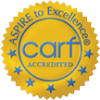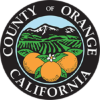Drug Detox: Withdrawal Side Effects
As important as it is, drug detox can be dangerous—even life threatening. People who attempt to stop taking drugs without proper medical supervision are at risk. Withdrawal symptoms can vary depending on the type of drugs you’re taking, how much you take, and how long you’ve been taking them.
The first stage of drug detox is called acute withdrawal. Acute withdrawal symptoms vary, but they typically include things like:
- Shaking
- Sweating
- Nausea
- Diarrhea
- Anxiety
- Depression
- Insomnia
These symptoms are caused by the sudden absence of certain chemicals in the brain that were produced by drugs. As these chemicals leave the body, they trigger an alarm system designed to protect us from harm.
Symptoms can last anywhere from several days to several weeks, depending on the substance and its half-life (how long it takes for your body to rid itself of half of the dosage).
Withdrawal symptoms will gradually decrease as your body clears itself of drugs or alcohol. However, it can take several months for your brain chemistry to return to normal levels after long-term use.
Medication Assisted Drug Detox in Orange County
There are several medications that can be used to help manage the symptoms of drug detoxification and reduce the risk of complications. Here are a few examples:
- Methadone: This medication is used to manage withdrawal symptoms and cravings associated with opioid dependence. It works by binding to the same receptors in the brain that opioids bind to, but without producing the euphoric effects.
- Buprenorphine: Like methadone, buprenorphine is used to manage withdrawal symptoms and cravings in individuals with opioid dependence. However, it has a lower risk of overdose and is less likely to be abused than methadone.
- Naltrexone: This medication can be used to help reduce drug cravings and prevent relapse once detox is complete. It works by blocking the effects of opioids or alcohol on the brain, and can be taken orally or via an injection.
- Benzodiazepines: These drugs are often used to help manage anxiety, tremors, and seizures during drug detox. Examples include diazepam (Valium), lorazepam (Ativan), and chlordiazepoxide (Librium).
- Clonidine: This medication can be used to help manage symptoms such as anxiety, agitation, and sweating during opioid or alcohol detox.
Drug Detox at Saddleback Recovery
At Saddleback Drug Detox center in Orange County, our clients are offered a full treatment detox. Beyond the physical aspect of ridding the body of addictive substances, our clients are given the tools to find psychological stabilization—a foothold for recovery.
The stabilization phase includes finalizing all the aspects of the next level of care. During their stay, our clients participate in:
Psycho-Educational Groups: DBT, CBT, Anger Management, Communication, and Emotional Intelligence
Recovery Groups: Relapse Prevention, Recovery Principles, Refusal Skills, and Practical Sobriety Tools
Experiential Therapies: Meditation, Mindfulness, Expressive Art Therapy, Yoga, Music Therapy, Life Skills, and Nutritional Cooking Classes
Support After Drug Detox
We walk with every client once they are ready to move on in their continuing addiction treatment. Rehab programs vary widely depending on what type of treatment they offer and what format they use (individual therapy sessions with a counselor; group therapy sessions; etc.), but their main goal is to help you learn how to live without drugs or alcohol. We work case-by-case to make sure the next step is the right one for each individual.
While drug detox can be a challenging and uncomfortable experience, particularly for those with severe drug dependence, it is a critical step in the recovery process. With the right professional support, including medication-assisted treatment and therapy, our successfully manage the symptoms of withdrawal and begin the process of long-term recovery.







